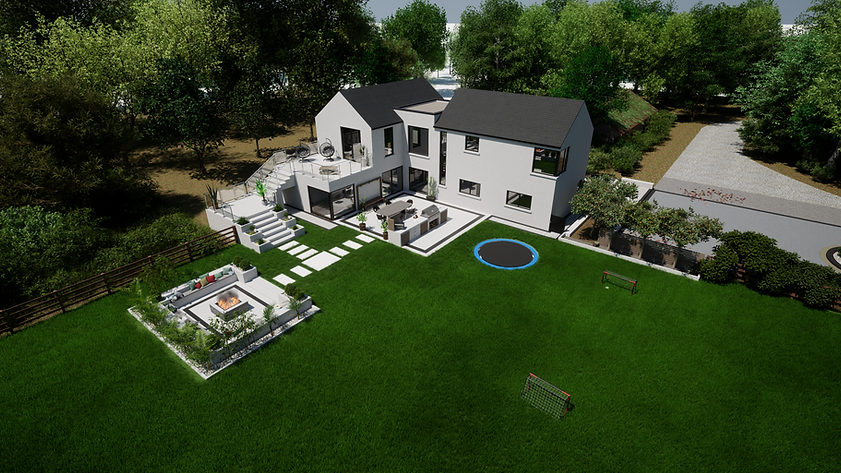Embarking on the journey to create a beautiful and functional garden requires thoughtful planning and consideration. A crucial step in this process is the garden design consultation – a meeting that sets the foundation for the entire project. Whether you’re working with a professional designer or tackling the project on your own, a successful garden design consultation is key to ensuring your vision comes to life. In this post, we will explore essential tips to make your garden design consultation a success, from defining your goals to effective communication with your designer.
1. Define Your Goals and Priorities:
Before scheduling a garden design consultation, take the time to define your goals and priorities for the project. Consider what you want to achieve with your garden – whether it’s creating a relaxing retreat, growing your own vegetables, or enhancing curb appeal. Think about the elements that are most important to you, such as specific plants, colors, or features. This preliminary self-reflection will provide a clear direction for the consultation and help your designer understand your vision.
2. Research and Gather Inspiration:
Arm yourself with inspiration by researching various garden styles, plant varieties, and design ideas. Create a mood board or a collection of images that resonate with your vision. This will serve as a visual reference during the consultation and help convey your preferences to the designer. Additionally, having a well-defined vision will streamline the design process and ensure that your garden reflects your personal taste and style.
3. Assess Your Site:
Understanding the unique characteristics of your garden site is fundamental to a successful design. Take note of factors such as sunlight exposure, soil quality, and existing plants or structures. Identify any challenges, such as drainage issues or uneven terrain, that may impact the design. This information will be invaluable during the consultation, allowing you to discuss potential solutions with your designer and create a plan that works harmoniously with the site’s conditions.
4. Establish a Realistic Budget:
Clearly define your budget for the garden project before the consultation. This will help guide decisions and ensure that the design aligns with your financial parameters. Be transparent with your designer about your budget during the consultation so they can tailor their recommendations accordingly. A realistic budget not only sets expectations but also allows for a more efficient use of resources, maximizing the impact of your garden design.
5. Communicate Your Lifestyle and Preferences:
Your garden should be an extension of your lifestyle, so it’s crucial to communicate your daily routines, preferences, and how you envision using the outdoor space. Consider factors such as the need for seating areas, play spaces for children, or specific plants that resonate with your cultural or sentimental values. The more information you provide about your lifestyle, the better your designer can create a garden that seamlessly integrates with your daily life.
6. Embrace Sustainable Practices:
Incorporating sustainable practices into your garden design not only benefits the environment but also enhances the long-term health and beauty of your outdoor space. Discuss eco-friendly options with your designer, such as water-efficient irrigation systems, native plant selections, and composting solutions. Sustainable practices not only contribute to environmental conservation but can also result in a more resilient and low-maintenance garden.
7. Prioritize Functionality and Flow:
Aesthetics are undoubtedly important, but a successful garden design must also prioritize functionality and flow. Consider how you move through the space, where gathering areas should be located, and how different zones within the garden will interact. Discuss these aspects with your designer to ensure that the final design not only looks appealing but also accommodates your practical needs, creating a harmonious and user-friendly outdoor environment.
8. Be Open to Professional Advice:
While your input is invaluable, remember that garden designers bring expertise and creativity to the table. Be open to their suggestions and advice, as they can provide innovative solutions to challenges and introduce elements you might not have considered. A collaborative approach, where both your vision and the designer’s expertise are incorporated, often results in a more balanced and well-rounded garden design.
9. Clarify Maintenance Expectations:
Clearly define your expectations regarding garden maintenance during the consultation. Discuss the level of involvement you desire, whether you prefer a low-maintenance garden or are willing to invest time in regular upkeep. Understanding maintenance requirements is crucial for selecting appropriate plantings and features that align with your desired level of care. This clarity will prevent misunderstandings and ensure that the garden remains a source of joy rather than a burden.
10. Establish a Timeline:
Lastly, discuss the expected timeline for the garden project. Establishing a realistic timeframe will help manage expectations and ensure that both you and your designer are on the same page regarding project milestones. Consider factors such as seasonal constraints, plant growth rates, and construction timelines. A well-defined schedule allows for efficient project management, minimizing delays and ensuring that you can enjoy your dream garden sooner rather than later.
Conclusion:
A successful garden design consultation is the cornerstone of a thriving outdoor space. By taking the time to define your goals, gather inspiration, assess your site, and communicate effectively with your designer, you set the stage for a collaborative and fruitful partnership. Embrace sustainable practices, prioritize functionality, and be open to professional advice to create a garden that not only meets your aesthetic preferences but also enhances your lifestyle. With careful planning and open communication, your expert garden design consultation can pave the way for a beautiful and enduring outdoor haven.


















